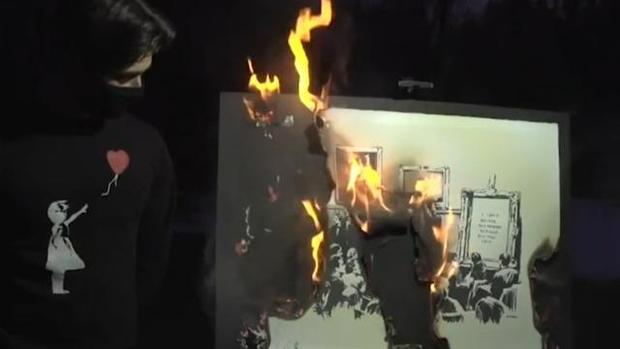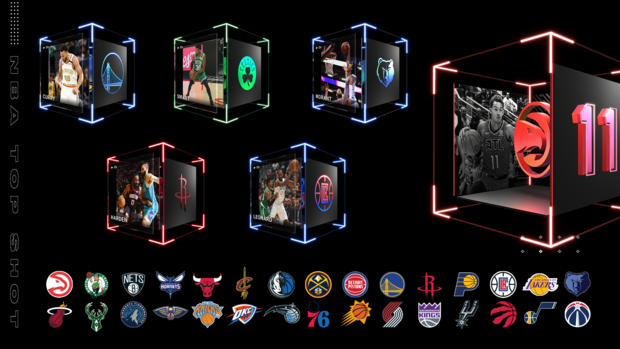NFT: beware of these situations, they could compromise your investments

NFT
The phenomenon of NFT, acronym for Non Fungible Token, is now on the rise. Over the last few weeks we have already told you about the sale of the first Tweet in history and the well-known GIF “Nyan Cat”, as well as a special variant of the Pringles. However, their use leaves some doubts about some aspects related to the maintenance of the system. As explained by the colleagues of The Verge, in fact, an NFT is more like a title deed rather than a real work of art.All the recordings relating to the moments of NFT are generally recorded in the Ethereum blockchain, which already seems to consume a significant amount of energy, raising some doubts about its possible environmental impact. The NFT does not contain the actual work, but a series of information on the object and where it can be seen, therefore, in practice, a link. The problem arises when this connection is no longer valid. For example, if one of the companies on which it is possible to see the product, such as Nifty Gateway, the well-known auction house, or Cloudinary, were to fail, the link would no longer be valid and, consequently, the NFT would no longer be worth. nothing.
To overcome this problem, many NFTs use a system called IPFS, InterPlanetary File System, which allows you to find a certain content as long as it is present somewhere in the IPFS network. This would allow you not to rely on a single host, greatly improving its reliability in the long run. However, even in this case, the system has flaws. In fact, the team responsible for Check My NFT checked several NFTs to verify the correct functioning of their IPFS addresses and, in many cases, found files that were not uploading, including works belonging to important artists. Apparently, the situation, fortunately returned to normal after the necessary reports, was caused by crashes of the hard disks that can lead to the permanent loss of resources.
As well as the paintings, for example, they must be stored under certain conditions to maintain their condition over time, NFT buyers should also be careful to ensure that the data relating to the work is present somewhere and constantly accessible.
You need a license to Windows 10 Pro for your brand new gaming PC? On Amazon it is available for a few euros, do not miss it.
What is an NFT? The trendy blockchain technology explained
In early March, a tech company bought a piece of art worth $95,000. Then the executives lit it on fire. At the end of the spectacle, which was shared live on the internet, the group unveiled a copy of the art, this time in digital form. The creation, by elusive British artist Banksy, was called 'Morons (White).'
As for the digital format, it's getting more hype than the painting and the burning put together. It's a rising type of technology called a non-fungible token, or NFT. Think of an NFT as a unique proof of ownership over something you can't usually hold in your hand — a piece of digital art, a digital coupon, maybe a video clip. Like the digital art itself, you can't really hold an NFT in your hand, either — it's a one-of-a-kind piece of code, stored and protected on a shared public exchange.
 A print by street artist Banksy burns on March 3, 2021, before buyers present a digital copy to the public. Screen capture/Burnt Banksy
A print by street artist Banksy burns on March 3, 2021, before buyers present a digital copy to the public. Screen capture/Burnt BanksyNonetheless, some NFTs are fetching millions of dollars. Investors, futurists and financial reporters are abuzz, and companies big and small are launching NFTs for profit, publicity, or some of both.
Along with the stunt that the company Injective Protocol pulled with its Banksy, there's the NBA, which recently launched Top Shot, an online marketplace selling video clips of game highlights. Those clips — think of a classic LeBron James dunk — command varying prices depending on rarity, and they all come in NFT format. Buyers collect them, and sometimes resell them, for tens of thousands of dollars, much like digital trading cards.
 A handout from NBA Top Shot shows a sampling of digital collectibles on offer. NBA Top Shot/NBA
A handout from NBA Top Shot shows a sampling of digital collectibles on offer. NBA Top Shot/NBAA Los Angeles pizza shop has released an NFT that, for one lucky owner, translates to free pies for life. And an artist named Krista Kim recently sold a virtual home, dubbed Mars House and created in an NFT format, for about $500,000.
The ballyhoo surrounding NFTs may seem similar to another much-hyped phenomenon known as bitcoin. People who are enthusiastic about one tend to be interested in the other, and that's because the technology is related. If you're thinking about buying NFTs, or if you just want to sound smarter when talking about them, here's what you need to know.
Wait, what's bitcoin again?So what is an NFT? To understand them, it helps to know the basics about digital currencies.
At its simplest, digital currency is a type of money. With varieties including bitcoin, ethereum and dogecoin, it's a cryptocurrency; it can be stored in an online account, on a USB drive, or in a digital wallet app on your computer or phone.
The value of digital currency goes up and down on online exchanges such as Coinbase. Those wild price swings are bad news for people seeking a low-risk investment option.
But there's good news about digital currencies too: They're almost impossible to counterfeit. Bitcoin, for example, relies on a shared public ledger called the blockchain, which uses sophisticated cryptography to ensure that the currency is authentic. A blockchain makes hacking very difficult because every transaction is recorded across a huge, decentralized network of ledgers; attackers would have to control a huge chunk of it to do any damage.
Digital currency hype has steadily risen in the past several years, regardless of its value at any given time. Tesla recently announced that it will accept bitcoin as payment for a car.
Digital art with a twistIn March 2021, the year-over-year value of bitcoin was soaring. A single bitcoin could fetch north of $50,000. It was clear that cryptocurrency tech could be useful in the right hands.
Meanwhile, pretty much all of us have had some experience with virtual assets. Think video games, digital artwork, logos, photos, animation, music and video clips. Data, including spreadsheets, counts as such an asset, too — anything in a digital form that comes with the legal right to use that asset. Even coupons get the digital treatment nowadays.
Of course, it can be pretty easy to pirate such digital stuff. Taking a screen-grab of a copyrighted photo is as simple as pushing two or three keyboard buttons at the same time. Copyrighted music is routinely used in unapproved music videos. Artists can, and do, seek damages if someone uses a copyrighted work without permission, but the process can be time-consuming and expensive.
Enter the NFT, or the NFT token. The basic concept of the non-fungible token: Marry the world of digital assets with the security of cryptocurrency. It's a digital asset plus certificate of authenticity plus legal rights all rolled into one. Buying an NFT means purchasing a hacker-resistant, public proof of ownership over a specific digital asset.
Could someone still painstakingly copy that digital asset? Sure. But they can't so easily pirate its provenance, and that, theoretically, is what gives an NFT its value.
This isn't money, but it could cost youLike bitcoin, non-fungible tokens rely on the decentralized power of blockchain technology to verify their authenticity. But unlike bitcoin, they're not interchangeable. You can't swap any old NFTs for a car or a pizza, because each NFT is attached to a specific digital asset — a coupon, a piece of art, a collection of trading cards.
Every bitcoin has the same value at the same time. Not so with NFTs. In short, think of an NFT as a unique, digital version of a certificate of authenticity, publicly rubber-stamped by the blockchain.
Some investors are betting big on the NFT marketplace and NFT art, hoping their value will soar. Others are buying NFTs strictly for publicity, bragging rights, or just to join a new community. Some proponents of NBA Top Shot admit that many of the video highlights it sells can be viewed anytime, by anybody, on YouTube. But they like belonging to the Top Shot community online, or they like the opportunity for an investment that could soar in price.
And an NFT of Twitter founder Jack Dorsey's first tweet recently sold at auction for — yes, really — $2.9 million… even though you can see that same tweet anytime you want, right on Twitter. (Dorsey donated the proceeds to charity.)
As for the future of NFTs, caveat emptor — buyer beware — especially if, unlike the execs at Injective Protocol, you don't have money to burn. If the hype dies down — and it could, at any time — the value of an NFT could drop as easily as a stock or, yes, a unit of bitcoin.